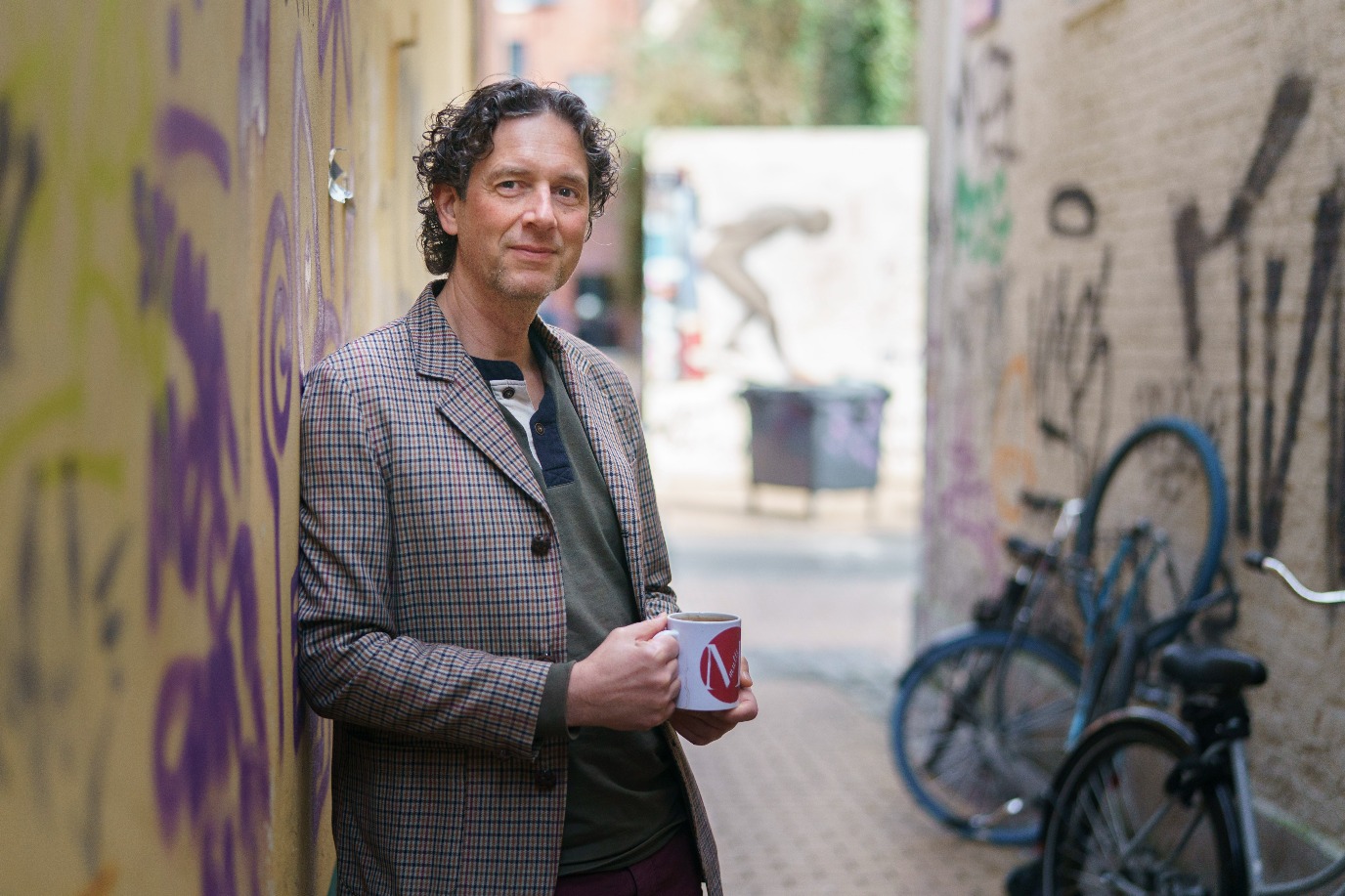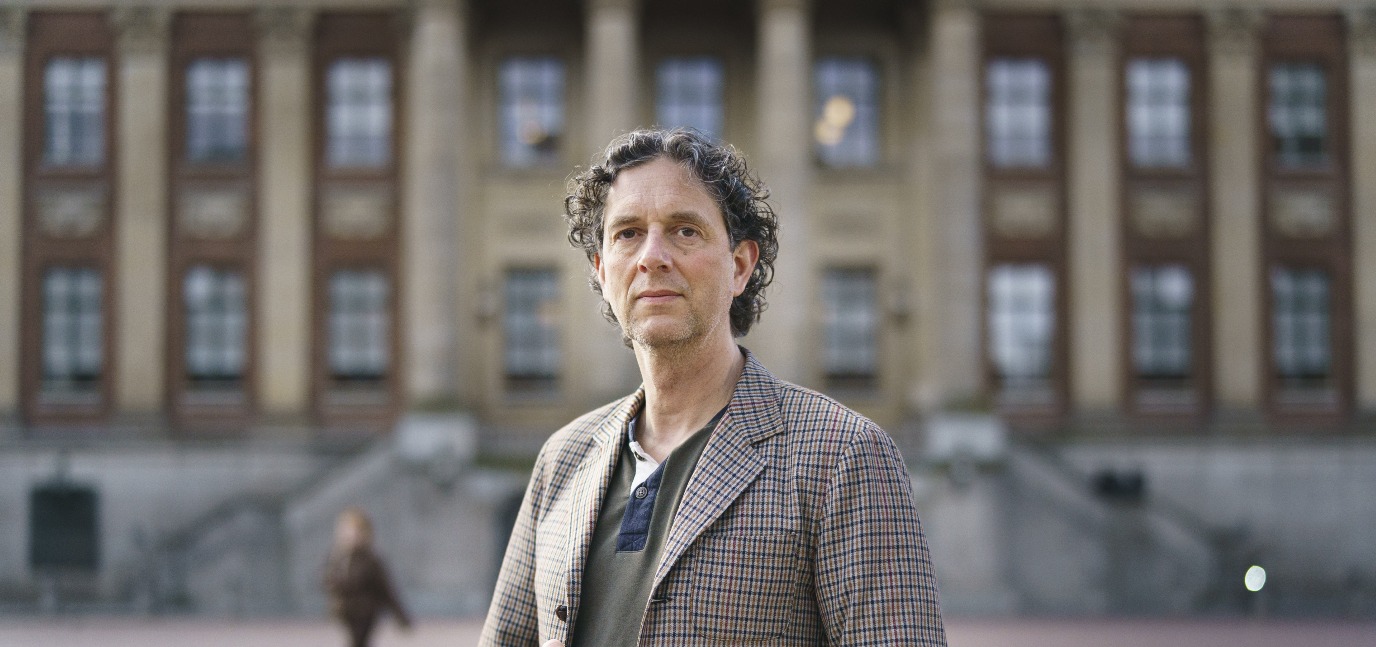Storytelling creates resilience to conspiracy theories
People love stories. But what happens if the story is a conspiracy theory? Then you need to be able to know the difference between a story and reality. To do this, you need narrative literacy. And assistant professor Sjoerd-Jeroen Moenandar believes you cannot start learning this too soon. Ideally, it should start in primary education.

Stories are as old as humankind. When we can create a story about something, we feel that we understand it. But in addition to stories that help us understand the world, there are also disruptive stories. These stories are radically different from the ‘official truth’ put forth by institutions such as the government and education. And sometimes that is a good thing. Sometimes, we desperately need alternatives to stories told by politicians, religious leaders, or mainstream media.
But the difficulty is that there are many stories that sound so enticing that we easily believe them. In these stories, all the pieces of the puzzle seem to fall into place. Inventors of conspiracy theories take full advantage of this. Like a carrot on a stick, they show us juicy and striking stories. The difficult part is that our brain struggles to know the difference between just a good story on the one hand, and a conspiracy theory on the other.
Creating a conspiracy theory
As an assistant professor in literature, Sjoerd-Jeroen Moenandar teaches storytelling and narratology to his students. An integral part of his lessons is creating your own conspiracy theory and thinking of how to present it to the world. A fun and, above all, a useful assignment. As students discover how a conspiracy theory is created and constructed, they also learn how to recognize one in real life.
Moenandar enthusiastically talks about the conspiracy theories students invented: ‘These stories always start with: “Have you noticed that...” People immediately react to that phrase. What follows is a partly incomplete story. This ‘undernarration’ offers the listener the possibility to fill in the gaps themselves. It’s like in a film, when a film director knows that you shouldn't explain everything. This also applies to storytelling. Once you notice that people are struck by it, you can add details to the story.’
Brain candy
Moenander has been fascinated by stories his whole life. ‘Evolution gave us a brain that allows us to create stories. This was once a crucial skill. By seeing events in a certain context, we were able to recognize danger in time. This is why we are still alarmed when we notice people whispering around us. Our brain is wired to instantly think: is this about me? You see a connection.’
But the following story exemplifies how this skill can also be used against us. Imagine walking down the street and meeting a man with red fluid on his hands. A bit further down the street, you notice a large knife. And still further, there is a body. Moenandar: ‘Our brain quickly combines these separate facts into a story in which the man with red fluid on his hands is a murderer. If it is true, this story can save your life— it increases your chances of survival. But what if it isn't true? Maybe the man is a painter with red paint on his hands, the knife was lost by a butcher, and the person on the street died of heart failure.’
This is how we function: our brain prefers the version with the murderer. This story seems logical and keeps you alerts—this feels good. A story like this is like brain candy: it is easy and enticing, but it is not necessarily true. ‘In a similar way, a conspiracy theory can be brain candy for our brain.’

Fast as lightning
It is not always easy to recognize the nature of a story. Moenandar: ‘People who believe in conspiracy theories are usually more prone to black-and-white worldviews. It is very appealing to them to create a story that is a conflict between good and evil.
What happens is a form of cognitive transformation. Everything is viewed in extremes. In that sense, narrative literacy is an exercise in nuance. To do this, you need to be able to critically examine your own story. Not everybody finds it easy to do, and it's usually easier when it's someone else’s story.’
Nowadays, stories, fake news, and alternative facts are also spreading as fast as lightning. Moenandar sees this as a threat to the increasingly complex and vulnerable systems that connect us all over the world. We are rapidly encountering more and more potentially disruptive stories.
Fact checking: avoiding the pitfall
We all know that we should check our facts. Moenandar: ‘The police, for example, shouldn't simply follow the narrative of the brain candy story of the man with a red fluid on his hands. They have to check the facts: was it blood, red paint, or something else? You should also be able to give yourself that slap on the wrist, especially if you have the tendency to quickly jump to conclusions. Your brain likes it that way: there is a good story, everything fits, and our brain rewards us with a good feeling. That's when you should ask yourself: “Hold on, wait a minute... what's going on?” The problem is that seeing connections and checking facts involves two types of cognition. And we are particularly bad at repeatedly switching between these two types of cognitive techniques.’
Narrative literacy sounds complicated, but Moenandar stresses that anyone can learn it. Because it is about stories, and everybody uses stories, it is suitable for all ages and all levels of education.
Teaching with stories
Moenandar advocates training children in narrative literacy and starting early. For example in secondary education, by asking students to come up with a successful April Fool's joke. This can also be turned into a challenge: whoever can convince the entire school community wins. It is even better to use teaching methods that suit the age and educational level of young people: ‘It’s really about children learning that it’s very enticing to fabricate a story where everything falls into place. A teacher can then show them: see, right now you are interpreting the story. Then you teach children that telling a story is all about selection: things to mention and things to leave out. This way, they can learn that you don’t always include all the facts in your story. This insight is what we call narrative literacy. And developing it makes us more resilient to conspiracy theories.’
Contact Sjoerd-Jeroen Moenandar
| Last modified: | 24 April 2025 4.36 p.m. |
More news
-
24 March 2025
UG 28th in World's Most International Universities 2025 rankings
The University of Groningen has been ranked 28th in the World's Most International Universities 2025 by Times Higher Education. With this, the UG leaves behind institutions such as MIT and Harvard. The 28th place marks an increase of five places: in...
-
05 March 2025
Women in Science
The UG celebrates International Women’s Day with a special photo series: Women in Science.
-
16 December 2024
Jouke de Vries: ‘The University will have to be flexible’
2024 was a festive year for the University of Groningen. In this podcast, Jouke de Vries, the chair of the Executive Board, looks back.

